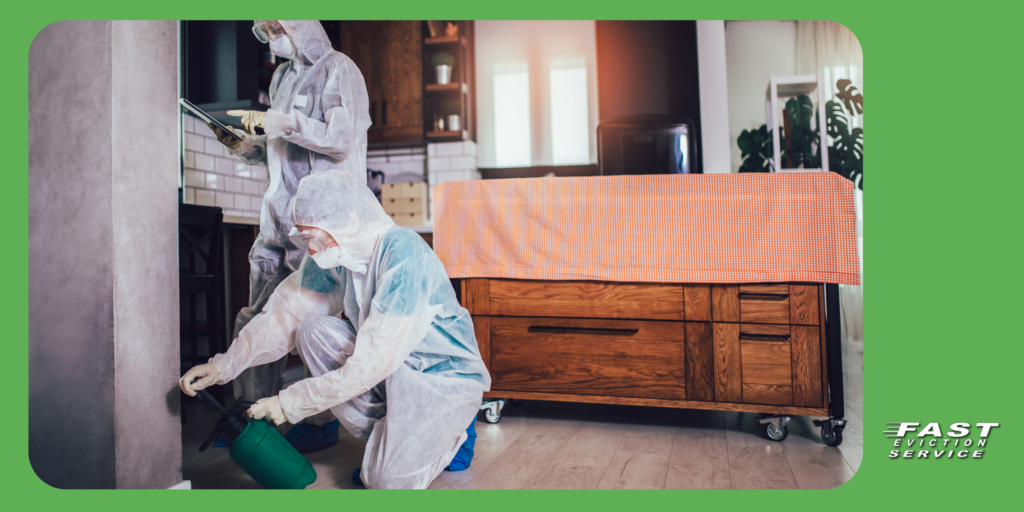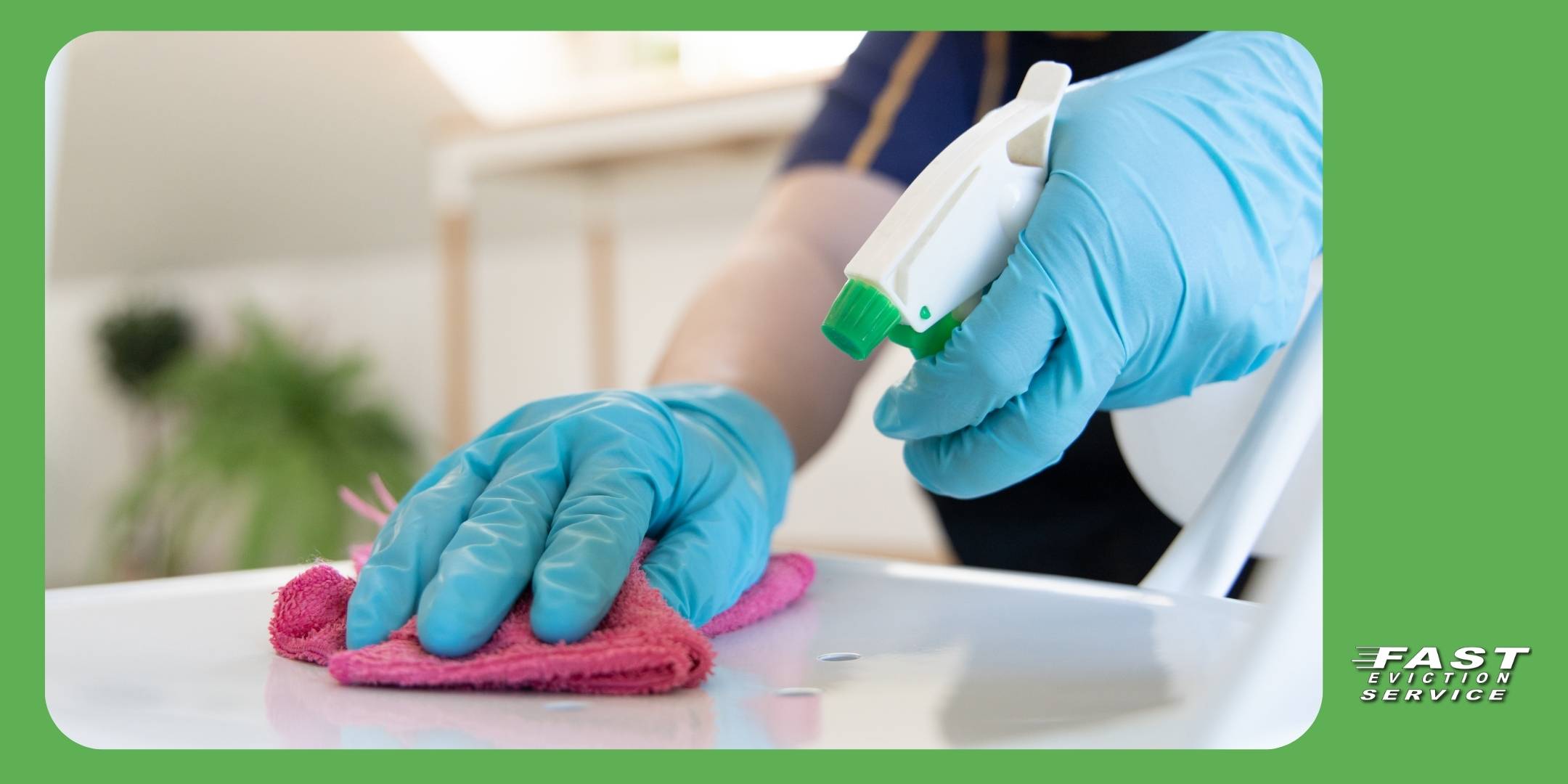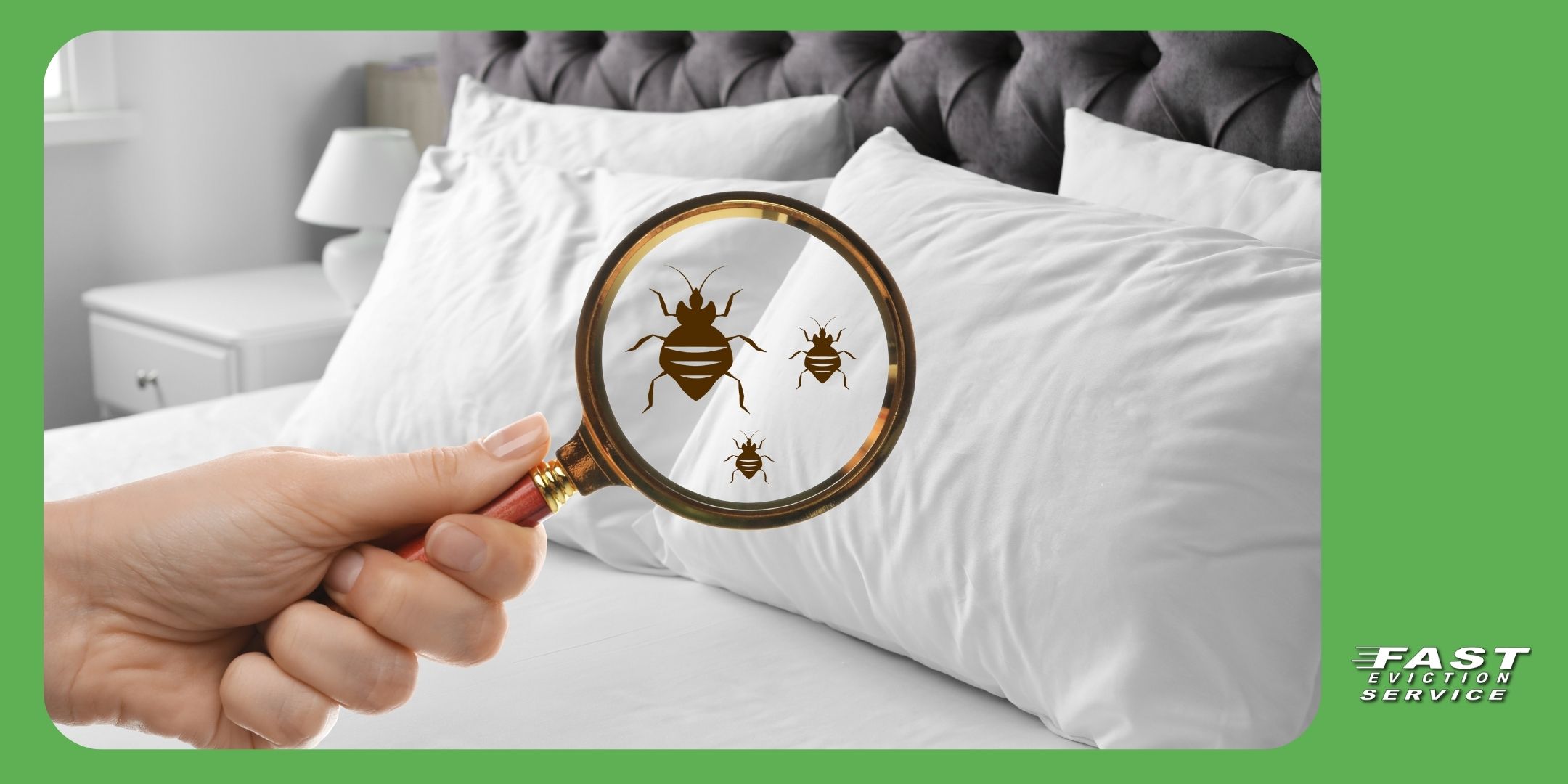Updated 02/19/25
Discovering pests of any kind within your rental property is undoubtedly an unwelcome occurrence. Upon encountering a pest in your living space, it’s natural to want to address the issue promptly. However, you might be uncertain about the appropriate course of action. Are you responsible for maintaining a pest-free environment, or is this the duty of your landlord?

It is crucial to grasp the respective roles you and your landlord play in pest control. Gaining insight into the legal obligations that both parties have when dealing with unexpected pests will empower you as a well-informed tenant or landlord.
Table of Contents:
- Who Is Responsible for Pest Control in a Rental?
- Understanding the Laws: Landlord vs. Tenant Duties
- When Tenants Should Pay for Pest Control
- Steps Landlords Should Take When Tenants Report Pests
- Key Pest Control Clauses to Include in a Rental Lease Agreement
- How Long Do Landlords Have to Address a Pest Problem?
- What Tenants Can Do If a Landlord Doesn’t Handle Pest Issues
- Preventative Pest Control: How Landlords Can Protect Their Properties
- Dealing with Pest Control Disputes: How to Resolve Conflicts Fairly
- Common Rental Pest Problems and How to Eliminate Them
Who Is Responsible for Pest Control in a Rental?
Pest control responsibility in a rental property largely depends on the source of the infestation and local laws. In most cases, landlords are responsible for ensuring that their rental units are habitable, which includes keeping the property free from pest infestations. However, if a tenant’s actions contribute to a pest problem, they may be required to pay for extermination and prevention services.
To determine responsibility, consider the type of pest, the condition of the property, and any lease agreements outlining pest control duties. Understanding these factors can prevent disputes between landlords and tenants regarding pest-related issues.
Understanding the Laws: Landlord vs. Tenant Duties
Pest control laws for landlords vary by state and municipality, but they typically require landlords to provide habitable living conditions. This includes addressing structural issues such as cracks, leaks, and poor insulation that can contribute to pest infestations.
On the other hand, tenants have a duty to maintain cleanliness within their rental unit. If a tenant fails to keep their living space clean and sanitary, leading to an infestation, the landlord may not be responsible for pest control costs.
When Tenants Should Pay for Pest Control
Tenants may be required to pay for pest control if their behavior directly contributes to an infestation. Common situations where tenants may bear responsibility include:
- Leaving food out, attracting rodents and insects.
- Failing to dispose of garbage properly.
- Bringing in secondhand furniture infested with bedbugs.
- Neglecting to report minor pest issues that later escalate into infestations.
If a pest problem is tenant-caused, landlords can deduct the cost of extermination from the tenant’s security deposit or require immediate payment.
Steps Landlords Should Take When Tenants Report Pests
When a tenant reports a pest issue, landlords should act swiftly to prevent further problems. The recommended steps include:
- Acknowledge the complaint and schedule a professional inspection.
- Identify the source of the infestation.
- Hire a licensed pest control service to address the issue.
- Repair any structural damage that may be contributing to pest entry.
- Follow up with tenants to ensure the problem is resolved.
Addressing pest concerns promptly helps maintain good landlord-tenant relationships and prevents property damage.
Key Pest Control Clauses to Include in a Rental Lease Agreement
To avoid confusion, landlords should include specific pest control clauses in lease agreements. These clauses should define:
- Who is responsible for routine pest prevention.
- How tenants should report pest issues.
- The tenant’s obligation to maintain cleanliness.
- Consequences for tenant-caused infestations.
Having a well-drafted lease agreement protects both parties from unnecessary disputes.
How Long Do Landlords Have to Address a Pest Problem?
The timeframe for addressing pest control issues depends on the severity of the infestation and local laws. Generally, landlords should take action within 24-48 hours of receiving a tenant’s complaint. If the infestation makes the unit uninhabitable, landlords must expedite the process and may need to provide temporary housing for tenants.
What Tenants Can Do If a Landlord Doesn’t Handle Pest Issues
If a landlord fails to address a pest problem, tenants have several options:
- Contact local housing authorities to report a violation.
- Request a rent reduction until the issue is resolved.
- Pay for extermination and deduct the cost from rent (if permitted by law).
- Withhold rent (only in jurisdictions where this is legally allowed).
- Pursue legal action for breach of the implied warranty of habitability.
Preventative Pest Control: How Landlords Can Protect Their Properties
Landlords can take proactive measures to prevent pest infestations by:
- Conducting regular property inspections.
- Sealing cracks and gaps in walls, floors, and foundations.
- Ensuring proper waste disposal and sanitation around the property.
- Scheduling routine pest control treatments.
- Educating tenants about pest prevention strategies.
Dealing with Pest Control Disputes: How to Resolve Conflicts Fairly
Disagreements over pest control responsibility can strain landlord-tenant relationships. To resolve conflicts fairly:
- Review the lease agreement for pest control clauses.
- Gather evidence, such as inspection reports and tenant maintenance records.
- Communicate openly and try to reach a compromise.
- Seek mediation if necessary before taking legal action.
Common Rental Pest Problems and How to Eliminate Them
Some of the most common pests found in rental properties include:
- Cockroaches – Address moisture issues and use bait traps.
- Bed bugs – Hire professional exterminators and use heat treatments.
- Rodents – Seal entry points and eliminate food sources.
- Ants – Keep surfaces clean and use ant deterrents.
- Fleas and Ticks – Require tenants with pets to use flea treatments.
Frequently Asked Questions
Can a tenant withhold rent for pest problems?
Depending on state laws, tenants may be allowed to withhold rent if the landlord fails to address pest infestations that make the rental unit uninhabitable.
How can a landlord prove that a tenant caused a pest infestation?
Landlords can use inspection reports, maintenance records, and pest control assessments to demonstrate that a tenant’s negligence caused the infestation.
What is the best pest control method for landlords?
Routine inspections, sealing entry points, and professional pest control treatments are the best methods for keeping rental properties pest-free.
How often should landlords perform pest control treatments?
Landlords should conduct pest control treatments seasonally or as needed, depending on the location and history of infestations.
By understanding who is responsible for pest control when renting, landlords and tenants can work together to maintain a pest-free living environment. Proper communication, legal knowledge, and preventative measures are key to avoiding disputes and ensuring a comfortable rental experience.




